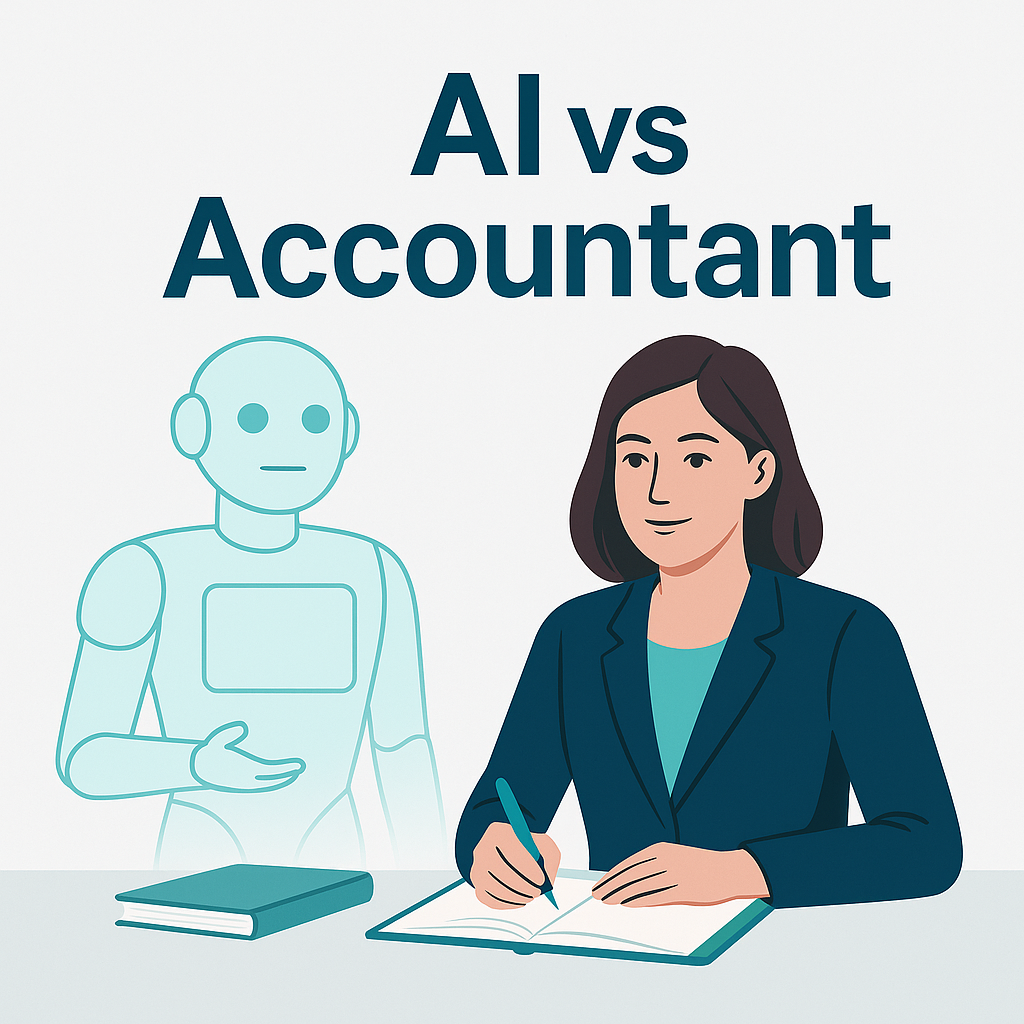AI vs Accountant: Why Professional Advice Matters When Deciding Between a Sole Trader and a Limited Company
Artificial intelligence (AI) tools can crunch numbers in an instant, but they can’t replace the judgement of a chartered accountant—especially when it comes to choosing the right business structure.
In two recent LinkedIn posts I shared a real example from my practice: an enquiry from Jane, a soletrader making around £60,000 profit. She was wondering if she should incorporate to save tax. I fed the same numbers into an AI calculator and discovered a series of mistakes. This blog summarises what happened, sets the record straight with the latest tax rules and shows why relying solely on AI can cost you.
Jane’s Question: Should I Go Limited?
Jane’s friend said that she would “save tax by going limited”. On the face of it, the idea sounds plausible. After all, corporation tax on profits up to £50,000 is 19%, which is lower than the 2045 % bands for personal income tax. Limited companies also separate personal liability from business debt and often allow more flexibility to raise finance or share profits within a family.
Tax rules change constantly, and several factors can tip the scales. To illustrate this, I ran the numbers for Jane twice: once manually and once through an AI calculator. Here’s what I found.
How AI Got the Numbers Wrong
When I asked the AI tool to work out Jane’s tax bill as a sole trader versus a limited company for the 2025/26 tax year, it provided a neat set of figures—but they weren’t correct. The mistakes stemmed from using outdated thresholds and misunderstanding how different taxes and expenses work. Below are some highlights (or lowlights):
- Employer’s National Insurance (NIC) threshold – The AI used the old £9,100 annual secondary threshold. From April 2025, employers start paying NIC at a much lower £5,000 threshold .
- Employer’s NIC rate – It applied the historic 13.8 % rate instead of the current 15 % rate on earnings above the secondary threshold .
- Accountancy fees as a posttax deduction – The calculator treated accountancy fees as an aftertax personal expense. In reality, they’re deductible business expenses that reduce taxable profit .
- Class 4 National Insurance – It assumed a flat 6 % NIC on all profits over £12,570. For 2025/26, selfemployed people pay 6 % NIC only up to £50,270; profits above this are charged at 2 % .
- Class 2 National Insurance – The tool still added Class 2 NIC. From April 2024, Class 2 NIC is no longer payable for selfemployed people with profits above the Lower Profits Limit .
- Overall outcome – Most importantly, the AI concluded that incorporating would save Jane money. When I corrected the numbers using current rates and allowed for accountancy fees correctly, the result flipped: as a limited company director with a typical mix of salary and dividends, Jane would actually keep around £352 less than she would as a sole trader.
- The AI’s calculation looked plausible but ignored the subtle changes to National Insurance thresholds and rates and mistreated expenses. It only came close to the right answer when I challenged it with followup questions.
A Reality Check: Sole Trader vs Limited Company at £60,000 Profit
Comparing Jane’s situation under both structures using the latest 2025/26 rates:
| Item |
Sole Trader |
Limited Company |
| Profit before tax |
£60,000 |
£60,000 |
| Deductible accountancy fees |
Deducted from profit before tax |
Deducted from company profits |
| Taxes & NIC |
Income tax at personal rates + Class 4 NIC (6 % to £50,270; 2 % thereafter) |
Corporation tax at 19 % on profits; salary subject to employer NIC at 15 % and employee NIC; dividends taxed at lower rates |
| Net amount retained |
≈ £45,705 |
≈ £45,353 |
The table shows that, at this profit level, there’s no immediate tax advantage in forming a limited company. The savings from the lower corporationtax rate are largely wiped out by higher employer NIC, administrative costs and the correct treatment of accountancy fees.
Beyond Tax: Other Factors to Consider
Tax isn’t the only consideration. Here are some other factors Jane (and anyone in a similar position) should weigh up:
- Liability – A limited company is a separate legal entity, so you’re personally liable only for the amount you’ve invested . Sole traders are personally responsible for their business debts.
- Funding and ownership – Companies can raise capital more easily by issuing shares and may attract investors . Sole traders rely on personal or business loans.
- Administrative burden – Companies must submit annual accounts and corporationtax returns from the first pound of profit . Sole traders have a simpler selfassessment and can use cashbasis accounting .
- Flexibility in sharing profits – Companies can distribute profits as dividends to shareholders, including family members, potentially reducing the family’s overall tax bill .
- Future plans – For owners expecting to earn significantly more in future or raise external finance, incorporating might deliver longterm savings and growth opportunities despite higher shortterm costs.
Conclusion: Why You Still Need Professional Advice
AI tools can provide ballpark figures, but they often lag behind when tax rules change or when they’re required to interpret realworld complexities. In Jane’s case, an AI calculator not only used obsolete NIC thresholds and rates but also mishandled deductible expenses and underplayed the realworld result. If Jane had relied on the tool, she might have opted to incorporate unnecessarily and ended up paying more tax.
When it comes to AI vs Accountants there is no one size fits all answer to the sole trader vs limited company question. Profits, risk tolerance, growth plans and personal circumstances all play a part. A qualified accountant stays on top of legislative changes – such as the new £5,000 employer NIC threshold and 15 % rate , or the removal of Class 2 NIC – and can model how those changes affect your specific situation. Before making a decision that could impact your takehome pay and liability for years to come, always seek professional advice.
So to contact The Accountancy Office to discuss this more please click here or call us on 01386 366741




